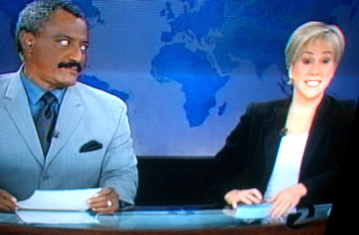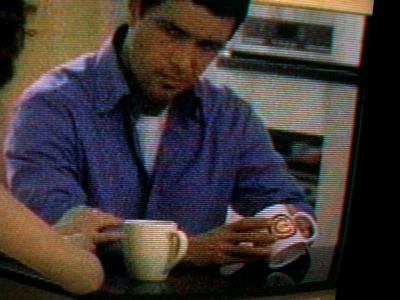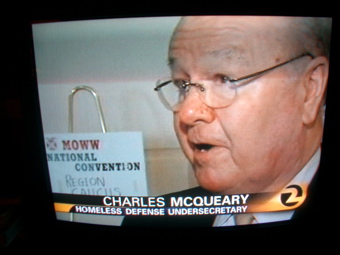
8/10/22 update: KTVU announced today that Leslie Griffith has died at her home in Mexico from the affects of Lyme disease.
11/17/06 update: It’s official–Leslie Griffith is gone for good from KTVU.
10/8/06 update: The San Francisco Chronicle’s Matier and Ross weighed in on Leslie Griffith’s absence. KTVU’s general manager said she’s on leave at least until October 27; a week or so earlier, he was saying he expected her back on October 9.
9/29/06 update: The Case of the Missing Anchor
Original post, Sept. 20, 2005: I grew up in the Chicago area with the now-shocking notion that local TV news could be more than a weak, ill-informed entertainment. But not to rely too much on my memory of how solid those newscasts were or weren’t — of course, everything was better in the ’60s — there’s not much debate that most TV news has devolved into puffs of insubstantiality dressed up to look like they mean something. If these shows — both the locals and much of the stuff you see on network and cable — had to make their living on the actual knowledge they convey, they’d be out of business. But pictures are compelling. We need our weather, sports and advertising and the personalities who present it all. So the shows chug on.
Here in the Bay Area, the last bastion of news for news’ sake was KTVU, Channel 2. Going back to their unaffiliated, pre-Fox days, the station had a 60-minute newscast it put on at 10 p.m., an hour ahead of its competitors and their 30-minute happy-talk shows. Channel 2 managed to use the 60 minutes well. Stories ran longer and there were more of them. “The 10 O’Clock News” developed a cast of reporters and anchors that actually seemed, well, “reliable” and “trustworthy.” It developed a reputation of seriousness and substance.
But nothing’s forever. Under cost pressure, Channel 2 long ago started cutting back. It started emphasizing easy, cheap stories like traffic accidents, fires, and the latest shootings. Much of the old cast is still there, though many members look tired. One significant change was the departure in 1998 of the longtime co-anchor Elaine Corral, who quit at the end of the broadcast one night without letting anyone know what she was doing. We were watching that night; it was TV to remember. It was also a loss to the show’s chemistry — she and the other anchor, Dennis Richmond, always looked like a good fit — but it also could have been an example of someone getting out at the right time.
Leslie Griffith, a reporter and weekend anchor best known for her wild mane of blonde hair and somewhat goofy on-air manner, replaced Corral. She seemed like a lightweight next to Richmond, who conveys something you might even think of as gravitas if you forget he’s presenting the local news. And no warmth has ever developed between Richmond and Griffith. Richmond is slow but precise; Griffith is someone who once looked like she was having fun on camera but decided or was told she needed to look serious when she became the show’s co-star.
The problem is, she can’t pull it off, and sometimes her performance is ridiculous: She stumbles on the scripts, she smiles when there’s no reason to smile, she hmmms portentously. Last night — we watched right after wallowing in an hour of “Prison Break” — she was nearly helpless from the very top of the show when she and Richmond were alternating reading the live teasers:
“As floodwaters recede in New Orleans … residents are first to return to home … and … but they’re told … not just yet.”
In the first part of the show, she had another couple muffs that sounded much worse than they read:
“Here in the Bay Area paramedics … the death toll from Katrina has reached 973 across the entire Gulf Coast region. It stands at 636 [on-screen graphic read 736] in Louisiana.”
And:
“Police are looking for the reason … or the reasons responsible … the persons responsible … for a brazen daylight shooting.”
Her style when she starts to get lost is to grind on mechanically, like a garbage disposal taking on an avocado pit. Richmond’s typical reaction, displayed last night, is visible annoyance or disgust.
Everyone in the news-reading business has bad days. There’s a mistake in the script or the production rundown, the TelePrompTer has a problem, or they just get lost. But Leslie does so badly so often that she seems permanently lost. It’s hard to understand from the outside why she’s permitted to keep going.
Like this:
Like Loading...



